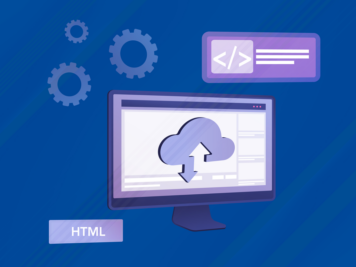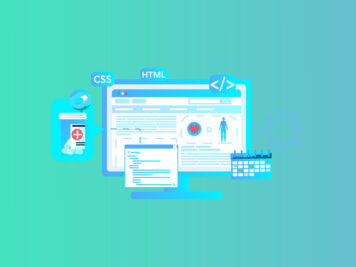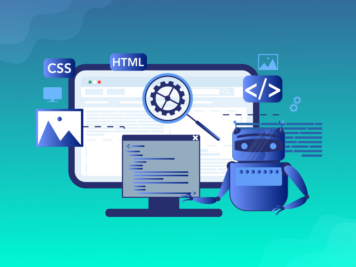As a founder, product owner, or CEO, you always brainstorm and that spark innovative ideas. But the real challenge lies in turning those ideas into products people love and trust to solve their problems. Most importantly, the product must defy time. Understanding the startup product development process is the first step.
90% of startups fail. There are multiple reasons. According to CB Insights, 29% of startups fail because they ran out of money or weren’t able to raise additional funding. Another 42% of respondents cite not targeting a “market need” as the primary cause of failure. Perhaps most critical, 19% fail due to not having right team in place. These numbers underscore how crucial it is to take a thoughtful, organized approach to startup product development to reduce risks and increase success rates.
After working with startups for over 20 years, we have refined our product development process to help companies overcome the challenges of bringing their ideas to life. This article offers practical methods for addressing startup product development challenges.
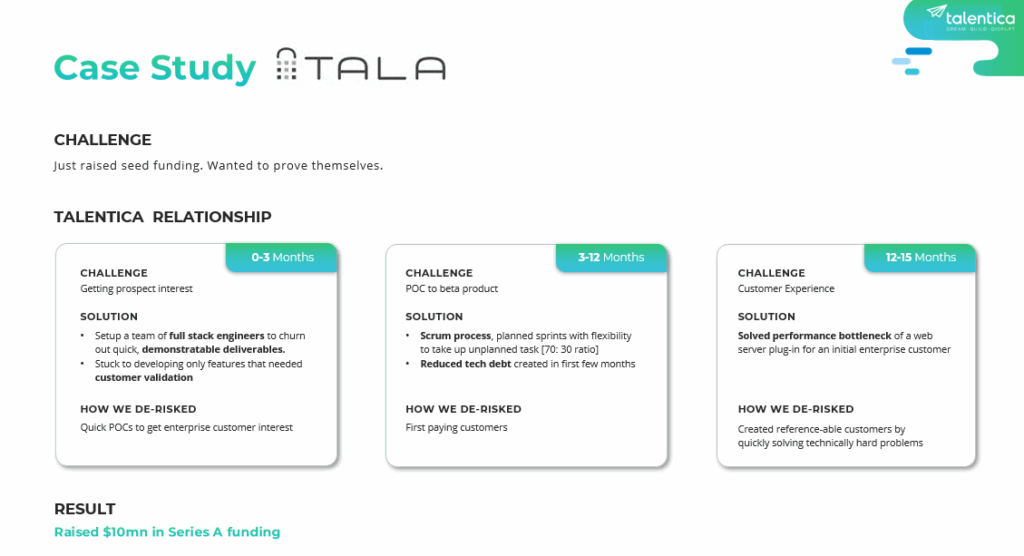
Are you interested in learning more? Access the full case study here->
What is startup product development
Startup product development is the process of turning an idea into reality that is aligned with the startup ecosystem. Startups don’t have the luxury of time or endless funding. They need results, and fast.
Every startup starts in the same place: the early stage. And it’s driven by one goal—find out what customers will actually pay for. That takes shipping fast, learning from real usage, and improving in public. The product roadmap? It’s a guess until customers confirm it.
Once that signal of product-market fit arrives—the priorities shifts. The focus moves to scaling that initial success. Revenue can 4x or 5x in this phase, but only if the startup can extend what works in one customer segment to others. The product needs to mature fast—without breaking.
When a company enters the mature stage, the focus turns to sustain the business. Now the company has traction, a customer base, and real competition. Growth slows, and the priorities shift again: profitability, efficiency, and reinvention. What got them here won’t get them there. Old systems need rebuilding. Teams need rethinking.
These steps might look similar to that of a normal product development journey. But what makes it different is the startup culture. Startups work with limited resources and their deadlines are crazy. If they fail to stand out, they risk fading out.
As a startup transitions through these different stages of the business lifecycle, they need to adjust their product development strategies. From an engineering standpoint, they must change the people and processes they employ at each phase to successfully reach the next.
Startup product development strategy that matches the moment
| The right startup product development strategy at the right time | |||
| Stage | Early (Move Fast, Learn Faster) | Growth (Build at Scale Without Breaking) | Mature (Optimize, Comply, Reinvent) |
| Priority | Time to market; Architecture for scale; User experience | Feature release velocity; Marquee customer success; Product scaling | Operations cost control; Compliances & audits; Re-innovation |
| Teams | Full-stack generalists, architects, and UX designers | Specialized engineers (frontend, backend, QA), feature teams | Program managers, compliance experts, data scientists, ML engineers |
| Process | Quick iterations; Show & tell sprints; Product patterns | Formal sprint process; Tech debt management; QA automation, CI/CD | Longer release cycles; New technology POCs; Certifications |
| Focus | Validating assumptions and building a flexible architecture that won’t collapse under change | Delivering value reliably while scaling infrastructure and user experience | Keeping margins healthy while future-proofing the product |
Startup product development is the process of turning an idea into reality that is aligned with the startup ecosystem.
Now that we have outlined how startup product development evolves with each stage of growth, let’s zoom in on what it looks like in action- from idea to validation and beyond. Here’s breakdown of each step and how to approach it effectively.
The startup product development journey from ideation to validation
Ideation
Product development starts with a clear understanding of the problem it aims to solve. Many startups fail to describe their problem effectively. They end up developing solutions that no one needs. It is a part of what Tom Eisenmann calls “false starts”. These occur when companies launch products without understanding customers’ needs.
The first stage involves conducting detailed market research. Statista and Google Trends offer essential insights into market demand and developing trends. At the same time, direct connections with potential customers (through interviews, surveys, or focus groups) highlight issues that existing products overlooked. Slack used this method. They initially built a tool for internal communication but then launched it for external users after realizing its market potential.
A competitive analysis to understand what rivals have to offer and where they lack can expose unique selling points. Tools like SEMrush do these to help entrepreneurs position themselves effectively.
Conceptualization and feasibility
Once the problem and the market needs are clear, turn your idea into a practical product concept. Develop wireframes and prototypes to represent functionality and user experience. Early prototypes are critical to verify assumptions, get feedback, and gain approval from stakeholders.
Conducting a feasibility study is crucial to identify any technological limitations that can impact the development or commercial viability of the product.
User- centric design
A product’s success depends on its ability to connect with people. McKinsey revealed in a study that companies achieve higher customer satisfaction when they consistently integrate user input into their design processes. This shows why startups must review their customers’ experiences to deliver better products.
User personas can help. These fictional profiles reflect target demographics and help teams visualize end consumers during product development. For example, financial software targeting millennials can emphasize mobile-first designs, but a B2B SaaS solution for business customers may favor onboarding features.
Usability testing helps raise awareness by identifying design flaws early on. Teams that use technologies like Hotjar to monitor user behavior can optimize interfaces, ensuring the product not only meets, but exceeds, customer expectations.
Grooming user story is also important. Clear, well-defined user stories help developers and designers stay aligned with customer needs and deliver high-value features. Consider a user story for a food delivery app where the user is a busy professional and wants to schedule food deliveries in advance to avoid worrying about meal prep. This clearly highlights the user goal and helps the team prioritize features like scheduling options, time slots, and automated reminders to meet this specific needs.
Design Thinking (emphasizes empathy, problem definition, ideation, prototyping, and testing) improves the product further. It ensures that the product is human-centric. While designing, you should also keep an eye on accessibility. Your product should be accessible to all, especially those with disabilities. Compliance with accessibility guidelines can also lead to new user groups.
Minimum viable product
Launching a product doesn’t require perfection, but proof. The minimum viable product (MVP) is the first practical step in testing a startup’s idea. Startups that focus on core features can gauge market reactions with minimal expenditure. Dropbox’s MVP, for example, was a short explainer video demonstrating its capabilities that led to thousands of beta sign-ups without any coding required.
Many entrepreneurs fall into the trap of over-engineering their MVPs. Too many features lead to missing crucial early feedback. Instead, the goal should be to create a lovable minimum product (MLP)- one that people will love.
CB Insights reveals that chances of raising capital are higher for startups with MVPs. . That’s why your MVP is not just a test, but also a launchpad for future expansion.
A client of ours in the risk management domain is a good example. They wanted to simplify decision-making for B2B professionals in credit, risk, compliance, and supply chain. Instead of going straight into product development, they tested their core idea with initial customers. With the positive response, they decided to launch their first product version in 120 days.
To accelerate their time-to-market, they partnered with our team of experts. We helped them by prioritizing the core features that mattered most. Our product engineers built a scalable architecture, reduced development time, and ensured a smooth product lifecycle.
This resulted in a successful product launch within the 4 months, attracting 5 B2B paying customers in a month and raising funding from leading information industry professionals, early-stage investors, and family offices.
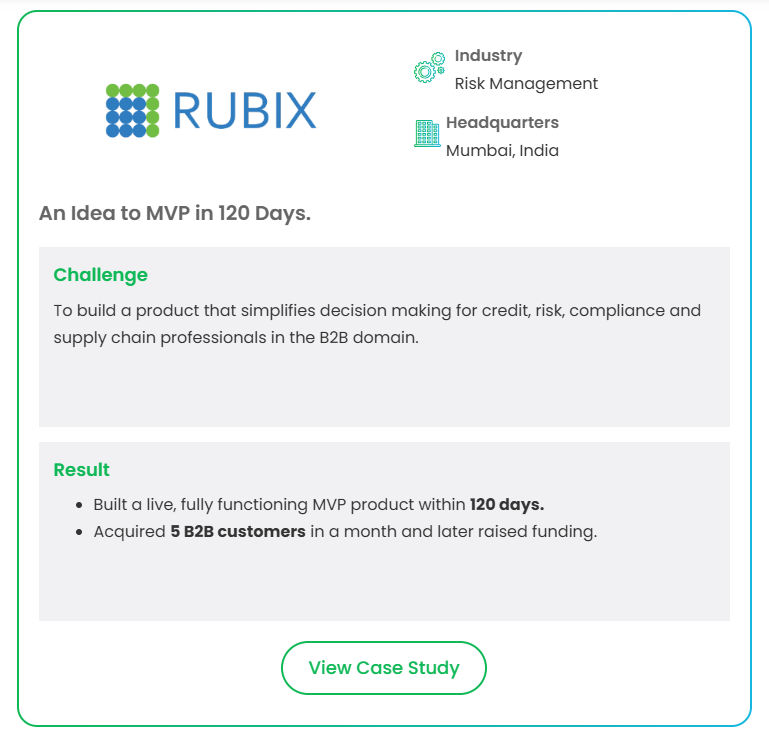
[Read the full story here: Idea to MVP in 120 days]
Building your own MVP becomes easier when you know the right steps. To know them better, you can check our 8-step minimum viable product checklist for developing a successful startup product.
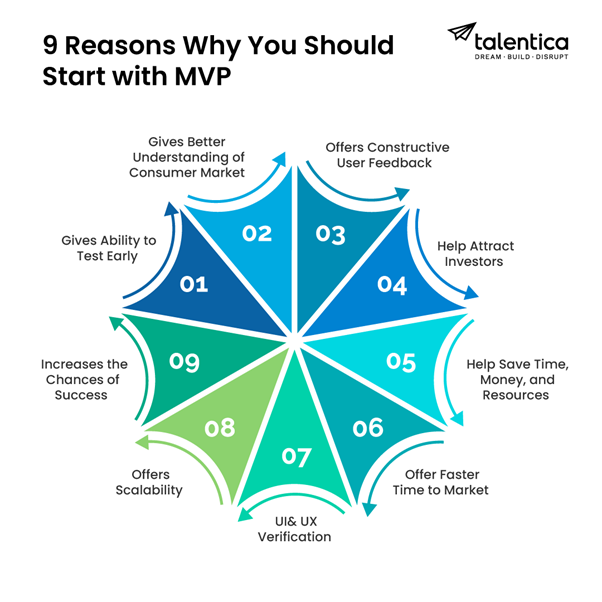
Testing and validation
Testing and validation are critical for the startup product development process. These start once you build your MVP. Your early adopters share with you user feedback. Based on them, you improve the user experience, optimize functionality, and ensure your value proposition is compelling.
A/B testing and usability testing are crucial for this stage. You can learn more about user preferences and behavior by testing multiple iterations of a product or interaction. Lean experiments, such as mockups or prototypes, help you test new concepts quickly while saving time and money.
Achieving product-market-fit depends on constantly testing your assumptions and listening to your customers. The right process to do so is Build-Measure-Learn! Build something simple, measure how it is doing and learn from it. This critical feedback loop helps in identifying any shortcomings in product and making necessary improvements to find the product-market fit.
Post validation steps
Iterative development using Agile and other methodology
Once your product is validated, it’s time to focus on continuous improvement and optimization. Agile methodology and its frameworks, like Scrum, Kanban, or Lean, help startups to stay flexible while adapting to changing market needs. Agile approaches allow teams to work in short sprints, delivering incremental changes and responding to feedback quickly. The benefits are obvious: according to PwC, Agile projects are completed 24% faster than traditional approaches.
For growth-stage startups, scaling agile practices may need a combination of in-house expertise and outsourced staff. This hybrid approach offers flexibility and preserves quality, particularly as companies enter global markets or incorporate new technologies.
However, don’t limit yourself to one specific methodology; be open to blending different approaches based on project requirements and team dynamics. The key is finding a process that works best for your team while keeping the end goal in mind- creating a successful product for your users.
Measuring progress and continuous improvement
“If you can’t measure it, you can’t improve it.”
Constantly measuring progress and improving your product is crucial if your development method is iterative. Critical metrics like customer acquisition cost (CAC) and net promoter score (NPS) can demonstrate how your product is performing in the market. For example, you might have to consider improving user onboarding strategy if your retention rates are declining.
The secret to constantly improving your product is to learn more about your customers as it leads to a higher return on investment (Gartner). By tracking how different age groups use your product over time using methods like cohort analysis, you can make more targeted improvements. Tools like Mixpanel or Amplitude are great user behavior tracker.
Quick tip: Conduct user surveys twice a year to stay on top of what your consumers really need. You may be interested in: Software Development Guide For Startups
Scaling your product
When your product becomes market fit, start working on its scalability. If you are planning for expansion into new regions, modify your product to suit local preferences, languages, and budgets.
Invest in scalable infrastructure to keep up with growth. Tools like content delivery networks (CDNs) and Kubernetes help in delivering consistent user experience even during periods of high traffic.
Scalability also requires choosing the right cloud providers, establishing a microservices architecture, and adjusting data scalability approaches to meet growing demand.
Avoiding common pitfalls
Despite having a solid plan, startups can fail. Success is achieved by addressing obstacles head-on; ignoring them risks derailing growth and sustainability. Here are some of the typical challenges faced by startups, along with strategies to overcome them with tools and technology.
Feature creep
Feature creeps occur when a product is crammed with too many features. It’s tempting to include everything that customers recommend, but entrepreneurs need to stay focused on their overall mission. Adding too many features can lead to bugs, more maintenance, and divert resources from what’s really important.
How to avoid it: Feature creep can be reduced by explicitly outlining a product roadmap and sticking to it. Prioritize features that are consistent with your startup’s core mission and meet the most pressing user demands. Periodically assess the need for new features and examine their long-term impact on resources, maintainability, and usability. Encourage cross-functional teams to evaluate feature requests and verify that they are in line with the product strategy before committing to development.
Tunnel vision
Tunnel vision can cause teams to overlook important external influences. Before launching their products, startups need to be aware of local rules and industry regulations to ensure compliance.
How to avoid it: Startups should regularly conduct market and regulatory research to avoid tunnel vision. Fintech companies, for example, must comply with AML and KYC requirements in each nation where they operate. Before launching your product, ensure you comply with all regulations by forming a compliance team or consulting with legal counsel. To avoid overlooking important external elements that could impact your performance, engage with external stakeholders and gather a variety of viewpoints.
Lack of scalability
Similarly, a lack of scalability can jeopardize expansion initiatives. If IT infrastructure is not designed to handle increased demand, it can lead to downtime, poor performance, and unhappy customers.
How to avoid it: Startups must design their tech stacks with growth in mind. Your scaling approach should align with the volume of data and resources you have. Modular monolith is a good step forward from monolith when a startup has limited data and hasn’t experienced rapid scaling. It allows for streamlined development while still providing some flexibility. Microservice is preferable for handling large-scale data and complex systems. This approach breaks down your application into smaller, independent services that can scale individually. It provides greater flexibility and capacity to manage the load.
Serverless computing technologies, such as AWS Lambda and Google Cloud Functions, are also great for managing changing workloads without incurring significant upfront infrastructure costs. Don’t forget about technologies like Apache JMeter – early load testing can help you identify bottlenecks before they become a problem.
Ignoring data
Data is essential to building successful products because it provides entrepreneurs with valuable insights into user behavior and product performance. Startups that lack a robust data pipeline risk missing important opportunities to identify problem areas and adapt to market demands.
How to avoid it: If a data pipeline wasn’t developed from the start, start by identifying important data sources and prioritizing the most important metrics. Implement data tools to collect and centralize data and progressively expand the portfolio to ensure proper storage and analysis of actionable insights.
Team misalignment
Lack of team coordination is another silent killer. Poor communication and conflicting goals can jeopardize development, leading to project delays and dissatisfaction. Without a unified vision, efforts become fragmented, and goals become harder to achieve.
How to avoid it: Tools like Slack for quick discussions, Jira for task management, and Notion for document and project organization can streamline workflows and keep things clear. Regular team check-in and planning meetings, like virtual brainstorming sessions using Zoom or Miro, are great for keeping everyone in the loop. Setting clear OKRs (objectives and key results) ensures that everyone, from designers to engineers, is striving toward the same measurable goals.
Financial mismanagement
One problem that startups often face is poor financial management. The causes can be overspending or improper allocation of resources. This can lead to cash flow problems, making it difficult to fund operations or make investments in growth.
How to avoid it: By implementing good financial management procedures, startups can efficiently monitor expenses, control spending plans, and predict their financial needs. Maintaining financial stability also depends on smoothly processing recurring revenue.
Selecting the right tools and technologies for startup product development
Here’s a table to help select the right tools and technologies for startup product development:
| Tools/Technology | Purpose | Benefits | Examples |
|---|---|---|---|
| Design Tools | Facilitate interactive prototyping and communication | Enhances collaborations between design and development teams | Figma, Adobe XD |
| Backend Services | Streamline backend processes | Shortens development cycles and scales effortlessly | Firebase |
| Front-end Frameworks | Simplify and accelerate front-end development | Reduces development time while maintaining high functionality | React.js |
| Agile management | Streamline project planning and tracking | Enhances team collaboration and reduces time to market | Jira, Trello |
| Cloud Computing | Offer scalable and flexible infrastructure | Reduces infrastructure costs and improves scalability | AWS, Google Cloud, Microsoft Azure |
| DevOps Practices | Automate software development and testing | Speeds up release cycles and improves product quality | Jenkins, GitLab CI/CD, Docker |
| Security Tools | Protect data and ensure compliance | Safeguards sensitive information and builds trust with users | Check Point, McAfee, Splunk |
| Analytics Platform | Monitor user engagement and product performance | Informs data-driven decision-making and enhances user satisfaction | Google analytics, Mixpanel |
| Communication tools | Facilitates real-time communication | Improves team alignment and prevent misunderstandings | Slack, Microsoft Teams |
Product development for Startups is an extremely thoughtful process that requires a clear understanding of priorities at every stage. Startups start small and evolve rapidly, which makes product development more challenging and demands the utmost attention.
The right blend of PPV (People, Processes and Values) is a make-or-break factor when it comes to successful product development.
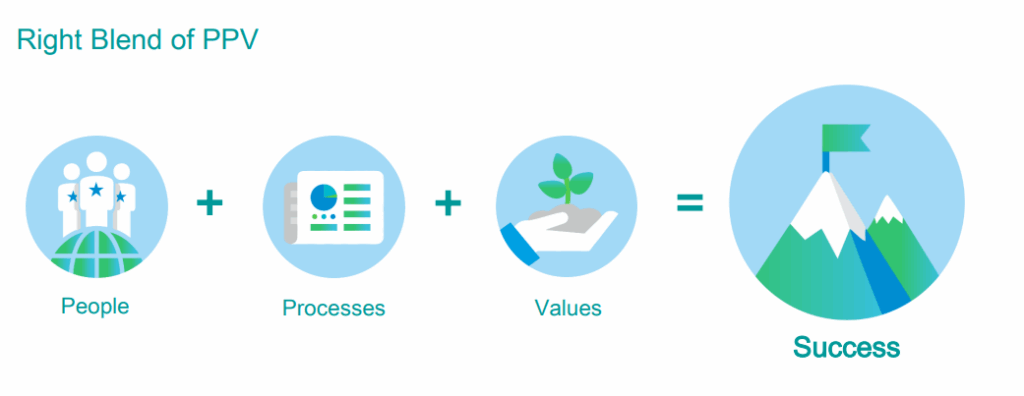
Your people are not just resources but are assets of your organization. It’s important to choose them wisely. This bring you to make a crucial decision:
Should you build an in-house team or outsource startup product development
Outsource product development or build an in-house team? It’s a crossroads with lasting consequences. Each strategy has advantages and disadvantages. Your choice should be aligned with your company’s goals, financial constraints, and timeline. Let’s look at both options to help you decide.
Building an In-house team
| Pros | Cons |
|---|---|
| Full control over the development process | Exorbitant initial costs for hiring and training |
| Easy communication and collaboration | Possibility of having a limited skill set within the team |
| Opportunity to shape company culture through hiring | Time-intensive recruitment process |
An in-house team fosters control and cooperation, but it takes significant planning and funding. A successful team needs both technical expertise and a product-driven mindset to encourage multiple viewpoints, iterate quickly, and solve problems early.
Consider these important positions for your startup team:
- Product Manager
- UI/UX Designer
- Front-end Developer
- Back-end Developer
- Quality Assurance Engineer
- Data Analyst
Read also: Hiring Employees for Startups: How to build a startup team
Outsourcing product development
| Pros | Cons |
| Access to specialized expertise without long-term commitments. | less control over the development process. |
| Cost-effectiveness in terms of salary and benefits. | Potential communication barriers and cultural differences. |
| Scalable resources to meet project demands. | Reliance on 3rd party providers for quality and delivery. |
Through outsourcing, you can find all the talent you need in one place. It will save you time and effort in searching for individual roles. For example, by partnering with the right software development company for startups, you can access a team of product engineers, quality assurance engineers, and data analysts who specialize in their respective fields. This allows you to concentrate on the core aspect of your business, while leaving the technical implementation to the experts.
Also Read: How to Hire an Offshore Product Development Team for Startups
Which option is right for you?
The choice ultimately depends on your particular situation. Outsourcing can be a productive method of getting things done quickly if you’re on a tight budget or schedule. By collaborating with an experienced offshore team, you can access highly skilled experts without having to deal with the hassle of hiring and onboarding full-time employees. Plus, outsourcing ensures that resources are exactly tailored to the development process by providing the option to scale up or down the team in response to project or product requirements.
This happened with a health insurance client who approached us to build a life insurance policy administration system from scratch. With their team stretched thin, they needed a tech partner to execute their vision on a tight timeline. In collaboration with their SMEs, we delivered the first version in just 4 months, enabling them to swiftly meet market demands and highlighting the speed and quality outsourcing can provide.
However, building an in-house team may be a better option if your goals include long-term growth and strategic alignment. But for many startups, outsourcing offers a viable solution to early-stage problems. It gives entrepreneurs and their teams access to invaluable expertise and allows them to focus on strategic goals, customer acquisition, and business growth.
An outsourcing partner with experience in product development for startups can offer useful advice and strategic guidance to help you move forward, whether that means being ready for Series A, Series B, or more rounds of funding.
Making the best choice requires careful assessment, and our guide can help.
[Download the Guide – The Startup’s Guide To Onboard Right Product Development Partner]
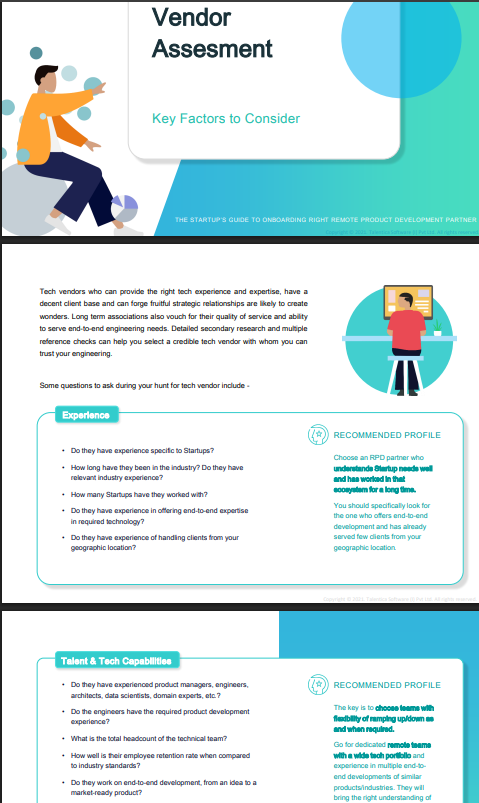
Conclusion
Startup Product development is a dynamic, iterative process driven by innovation, flexibility, and an unwavering focus on the consumer. Startups can survive the choppy seas of entrepreneurship by understanding the environment, thoroughly testing concepts, creating user-centered designs, and executing with agility.
The path is difficult, but the benefits—developing products that transform industries and impact lives—make every hurdle worthwhile. The future is full of opportunities for entrepreneurs who are prepared to learn, adapt, and develop. Ready to turn your idea into a successful product? Take the first step and begin your startup product development journey with us! Connect with us today!
FAQs
What are the main stages of startup product development?
The startup product development process consists of conception, validation, design, development, testing, and launch. Ideas are generated, evaluated by consumers, and created keeping user in mind. After development, the product is checked for bugs before being released to the market, and marketing efforts are made to attract users.
How do entrepreneurs ensure effective product development?
Successful startup product development hinges on several factors, including a deep understanding of the target market, constant user engagement, and agile reviews throughout the development process. Startups should focus on creating a minimum viable product (MVP) so they can test hypotheses and verify concepts quickly. Good team communication and collaboration with stakeholders also help the development cycle run more smoothly.



